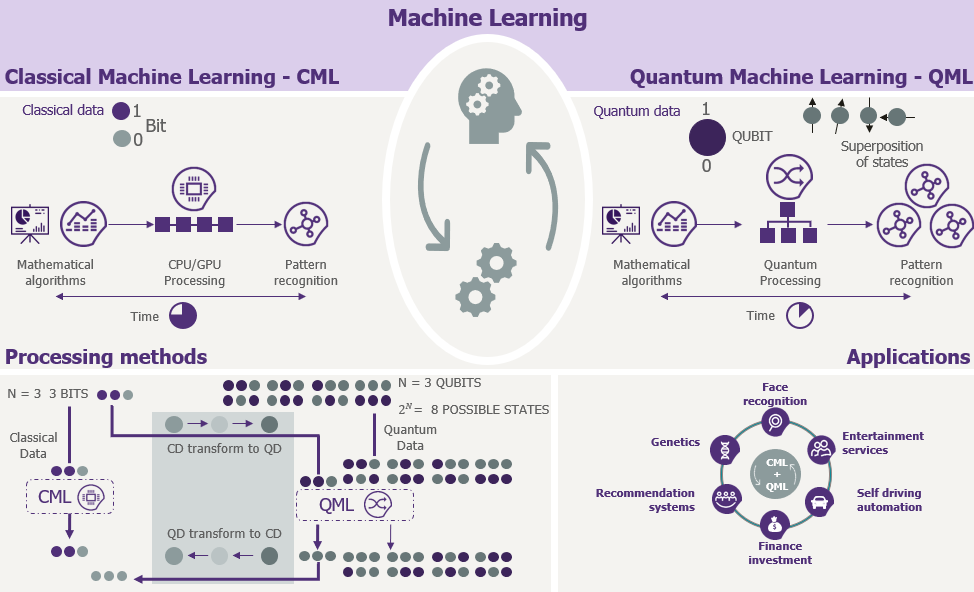Quantum machine learning – quantum algorithms that solve tasks in machine learning, thereby improving and often expediting classical machine learning techniques. Quantum machine learning (QML) is built on two concepts: quantum data and hybrid quantum-classical models.
Quantum data is any data source that occurs in a natural or artificial quantum system. Quantum data exhibits superposition and entanglement, leading to joint probability distributions that could require an exponential amount of classical computational resources to represent or store. The following are examples of quantum data that can be generated or simulated on a quantum device:
- Chemical simulation —Extract information about chemical structures and dynamics with potential applications to material science, computational chemistry, computational biology, and drug discovery.
- Quantum matter simulation —Model and design high temperature superconductivity or other exotic states of matter which exhibits many-body quantum effects.
- Quantum control —Hybrid quantum-classical models can be variationally trained to perform optimal open or closed-loop control, calibration, and error mitigation. This includes error detection and correction strategies for quantum devices and quantum processors.
- Quantum communication networks —Use machine learning to discriminate among non-orthogonal quantum states, with application to design and construction of structured quantum repeaters, quantum receivers, and purification units.
- Quantum metrology —Quantum-enhanced high precision measurements such as quantum sensing and quantum imaging are inherently done on probes that are small-scale quantum devices and could be designed or improved by variational quantum models.

The quantum-classical hybrid neural network can be implemented by using a parameterized circuit for hidden layer of our neural net. What is meant by the parameterized quantum circuit? A circuit where the rotation angle of each gate is specified by the classical input vector’s components. The previous Layer’s output is collected and used as an input for our parameterized circuit. Our quantum circuit’s measurement statistics can be collected and used as input for the following layer.
Many challenges must still be overcome before quantum machine learning becomes mainstream and delivers on its full potential. Research is ongoing in two areas. First, dealing with probabilistic states requires new ways of coding and new algorithms for processing information. Second, fundamental progress is needed on building robust quantum systems at scale – systems that can hold sufficient amounts of qubits under suitable conditions, such as on a silicon chip at room temperature.